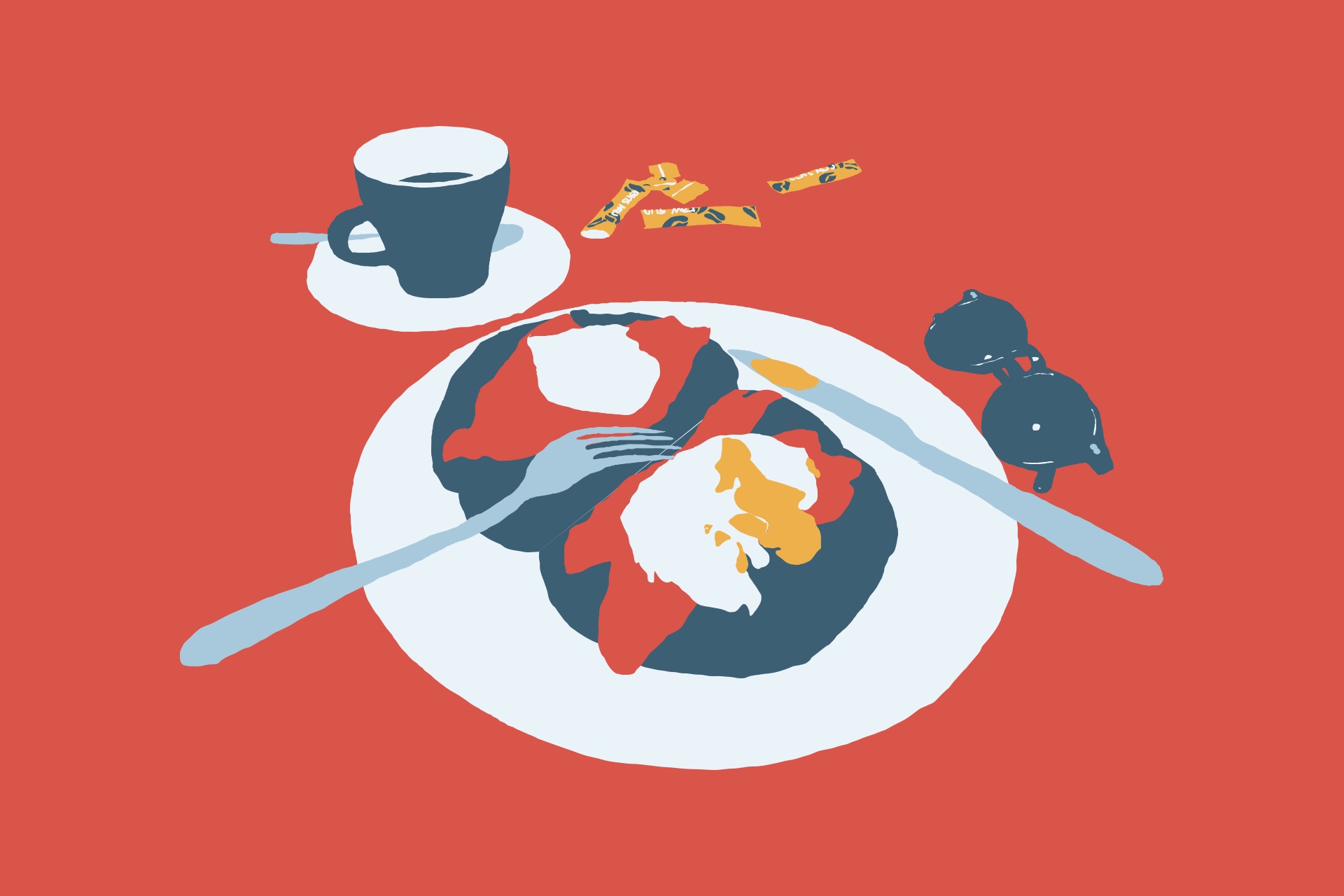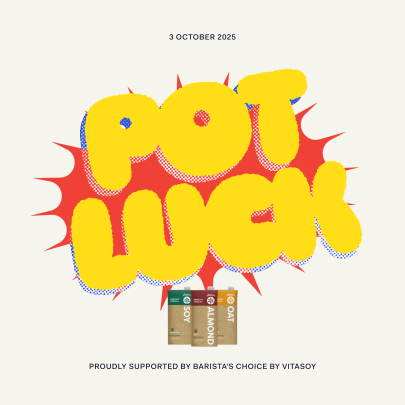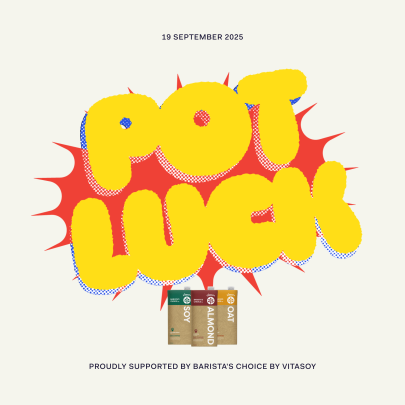Dec 17, 2021 Metro Eats
Kia ora,
Last night, I ordered a $7.99 Wicked Box (four wings, dinner roll, potato and gravy, chips and a drink) at 10.30pm, and then went straight next door for a round of McDonalds, eating wings in the Maccas drive-thru. It’s just been that kind of week. For me, food’s only about sustenance lately (well, more so than usual); slotting it in between life admin, as I move houses. Sometimes, getting caught in the usual beats of food writing (new openings, new dishes, new chefs, new drinks) I lose sight of the different roles food can serve; it’s not normal to view food only through the lens of the shiny and new. But even while my mind’s been too caught up to think much about food, or the restaurant scene in Auckland, an abrupt deliciousness upon first bite of a dish (or salty McDonald chip) has managed to catch me off guard multiple times this week, which is how I know there will always be a base level of joy to be found in food even when I’m not thinking about it too hard.
This is my last newsletter of the year, so I want to say thank you for reading, and thank you for buying or subscribing to Metro (if you do so!). I’ve loved covering the good, the bad and the ugly, experimenting with how the food section should work and look, and attempting to cover the difficult things and the weird things that may not have been before.
See you all in 2022,
— Jean
P.S. Hate to keep banging on about this, but since it supports my livelihood, I think I will. Soz! Please consider subscribing to Metro, as a gift to yourself, to a family member, to a friend, or just ‘cause.
P.P.S. If you’re still struggling with gift-giving these holidays, our Official Metro Christmas Guide, penned by Amanda Jane Robinson, is up on the site now. I found it infinitely useful.
P.P.P.S. I’m on the lookout for a new restaurant reviewer to work alongside me and Henry. You must think deeply about food, in a broader sense than just what’s on your plate, and have a strong, unique viewpoint that ideally differs from what Henry and I bring to the table. You don’t necessarily need to have a background in food writing, but a background in and knowledge of the hospitality industry would be a plus. If you’re keen, email me a bit about yourself and a sample of your writing (a short review of an Auckland spot, for example) to me here.
Looking back:
My personal favourite Metro stories this year (that I didn’t write)
Top 50 Wines 2021, by Olly Styles
A summer inside Auckland’s facebook community groups, by Alex Casey
The sad fate of the iMax centre, by Chris Schulz
How Chris Parker Felt, by Henry Oliver
Back to the Garden, by Ila Couch
A return to truth telling, by Anna Rankin
Putin and Me, by Bob Harvey
How Angella Dravid got into show business, by Angella Dravid
And, from the latest issue, out now, I loved Lana Lopesi’s piece on Yuki Kihara and James Milne’s feature on The North Shore.
Memorable bites of 2021
In this zig-zag, up-and-down, criss-cross of a year, I ate and coveted a lot of different dishes – some that have stuck with me, and some that I loved at the time but may have escaped my mind now. I hope you’ll forgive this imperfect, meandering list of delicious things that stood out to me as I scrolled through my iPhone Camera Roll.
Nyonya fish head curry at Bunga Raya: I love fish heads (fish head soup is another good one), but the fish head curry at Bunga Raya is on a whole ‘nother level. It’s huge, like huge huge, somehow cooked to just the right level of done (steamed then fried?) and slathered in an addictive curry that hides a whole heap of vegetables too. It’s the kind of dish that makes me think that all the best food is shared, and also that it’s very important to learn some etiquette when sharing whole fish (take the bones with you, please!).
Conservas Angelauchu anchovies: One fateful work day, Henry and I ate our way through the world’s anchovies (why do I always end up taste testing the most sodium-laden food products known to man? See: soy sauce taste test in the latest issue). I remember peeling this one out of the tin, popping it into my mouth and thinking, ‘Huh.’ It was so luxe, one of life’s true excesses in fishy form, and if I was rich I’d always have a tin of this in my pantry.
Saffron pappardelle with venison at Cazador : I’ve eaten at Cazador, our Supreme Winner at this year’s Restaurant of the Year Awards, a couple times in 2021, but for some reason this pasta dish still stands out to me even if it may not be the most technically rewarding, or even most tasty (the boar salami is still, without a doubt, the most flavoursome bite I’ve had). But the apparent simplicity of it (I say apparent because it’s most definitely not simple) was so lovely.
The Bitch Baker panipopo: I wrote about Auckland’s panipopo in a previous issue of Metro, and one of the first ones I had in the act of writing the story was The Bitch Baker’s, which I picked up at her house in Papatoetoe. It was swimming in a liquid coconut sauce, and I remember the buns being shaped like a couple of bronzed boulders, winking at me, almost; I tore it apart in the car, even at the risk of spillage, because I couldn’t wait a second longer. Inside: fluff. Me: happy.
Chicken pita at Carmel Israeli Food: Carmel opened pretty much during lockdown, having operated as a food truck and at markets in the years previous. I waited in line for around 30 minutes on a blazing hot day, no shade, and the grumpiness that had set in was immediately alleviated with the first bite of this pita. Topped with falafel and tossed through with amba sauce at no extra cost, it was a pillowy, textural feast; all crunch and spice, no filler. We ate ours on the side of the road and I came back the next week.
Rita: There wasn’t necessarily a singular thing at Rita that stood out (actually, the tempura broccoli, which was a add-on to the three-course menu, was truly a thing of beauty), but the whole experience made me feel so well looked after, like going to eat at the chef’s house. (The actual restaurant on the outside does in fact sort of look like someone’s very neat, very cute whare.) There isn’t a restaurant in Auckland that I could necessarily compare Rita to, but the closest I get to the feeling and essence of it is Forest , in Eden Terrace.
Quail at Sidart : I could not stop talking about this dish after I ate here, which is not something I do that often, but there was something about the way the crisp skin parted under my knife, the bright, circular serving of orange Tandoori sauce just to the side, the aroma of charcoal and the experience of tasting that aroma of charcoal.
Non-alcoholic drinks pairing, Hiakai: Big ups to my Wellington trip because it produced two gems for me, one of them, of course, being my expansive, narrative-driven meal at Hiakai. I’m a big fan of a drinks pairing, but am unable to partake in most of them (if you don’t know why, you must be new here), and I was deeply appreciative of the fact that my non-alcoholic pairing had the same level of thoughtful explanation as the alcoholic pairing at Hiakai. Exactly what I had, I don’t even remember, but I don’t think that’s as important here.
Tori paitan ramen at Townhouse Ramen: When I organised the pop-up with Townhouse Ramen, I had actually never tasted anything from them before – I was just going off word-of-mouth, friends, and assurances that it was bloody good. The first time I got a bowl was actually after the pop-up, since Kevin had made sure they’d have enough left over for everyone working that day. I had originally asked for the shoyu version, but after having a spoonful of the tori paitan broth, I changed my mind: it was so deep, rich, and indulgent. The noodles, too, made me realise how practically every single ramen shop in Auckland wer overcooking their noodles till they were soft and pliant; Kevin’s were “al dente”, with that all-important chew.
Q+A:
Maya Handley of Florets
My interview for this newsletter is with Maya Handley, who I talked to at Bestie in St Kevin’s Arcade in April this year, when she was operating as Kōpiko. Previously, as you’ll find out in the interview, this was mostly a subscription-based service, while selling loaves at The Shed Collective Market in Oratia. Time got away from me, but the world has a way of coming around again, and this week Maya opened her first brick-and-mortar in Grey Lynn, rebranded as Florets. The space is really beautiful, and I can’t express enough how much of a fan I am of Florets’ bread: it just makes me feel good to eat it. I like their rye, because it can last fresh up to eight-ish days, and then toasted for even longer.
Metro: I would say I’m mostly familiar with white sourdough, or that’s most of what I consume. How is your kind of sourdough different?
Maya: I think that’s really interesting, because I have a lot of customers who think sourdough is a style of bread. They see it as like a round, full, country-style white bread. That’s become a popular style of sourdough, but sourdough is not a style, it’s a technique of leavening. So all bread used to be made with sourdough before commercial baker’s yeast was identified and then made widely available. Any leavened bread or pastry can be made on sourdough culture. At the market, I do a round loaf, which is the same dough formula as the sliced sandwich loaf I do. But people will still ask me for the sourdough, pointing to the round [laughs].
Yeah, it’s funny because I feel like that’s been influenced so much by restaurants here. I remember I went out to Bar Martin , which stocks your sourdough, and I think the menu read, like, sourdough with sardines or something. And I was expecting like, you know, the traditional way you’d think of sourdough, especially in the context of Auckland restaurants and wine bars. But it was a thinner slice, more dense.
Yeah, because that one is also the rye. So I’m interested in baking exclusively using sourdough fermentation, because there are a few key health benefits to eating bread that’s fermented with sourdough culture. The other thing that I’m really interested in doing with my baking is baking highly nutritious loaves. So for that reason, I bake everything with 100% wholegrain flour, which is almost unheard of in any breadmaking. Because, essentially, what that means is you’re not using any refined white flour in the dough formula, which means you’ve got all the bran in there, and bran cuts away at the gluten structure when bread is developing. So it makes for a denser loaf. And it’s much harder to create a lighter loaf with it. So to get the big football of white sourdough, you need to have the giant air pocket in it which means that you need a really strong gluten structure. But all of the nutrients, or the majority of nutrients in flour, comes either in the form of fiber through the bran, or minerals and vitamins through the wheat germ, or the germ of the grain that you’re baking with. So if you take those out, then you’re left with a far less nutritious loaf. And also what I find is, like if I ate a slice of white sourdough, I’m still hungry. But I want to create bread that when I eat my sandwich, I feel sustained. So that’s been quite a process of recipe development, because your product becomes very sensitive to the way that the flour is milled. You need a very finely milled whole grain flour so that you can achieve some lightness.
But I also found as a mum, someone who didn’t have time to be always going to a bakery to get fresh bread, that I would get a nice loaf on the weekend sometimes and then by Tuesday it would be dry. So I also thought, if I’m gonna start this out as a subscription, then I want to bake loaves that are a) big enough, b) moist enough and c) in a format that they’re going to retain the moisture to last well for the week. It’ll also be useful to make kid’s sandwiches, whatever. So that’s why I thought I’d start with the loaves.
My grandparents immigrated from Switzerland, and when I was a teenager, I lived back there with my family. I think through that experience, from a young age, I got exposed to a lot of dark, dense breads. We lived in a German part of Switzerland. Those flavours stuck with me, and I got used to eating that sort of bread.
And did you get your start through the markets?
I started with the subscription, just asking friends. I wanted to see if there was a market for the bread that I wanted to make, sold at a price that it needed to be sold at, using spray-free New Zealand grown grain. It’s so much more expensive than buying grain from Australia. Yeah. So yeah, I just thought, ok, I’ll start it from home. And so I knew a few people in Titirangi, so I said would you be interested, but I wanted to make sure that they were happy to pay for it to see if it was like a useful pantry staple for them to have weekly. So I think I started with like, six or seven people on my first delivery. And slowly built it.
How did you kind of get to this point? You said you started baking in New York.
I used to be a photographer. Most of my time in New York, I was working as a photographer and also, I suppose, studying part-time photography there. But then, like lots of people, started to want to understand what sourdough was. So I started baking more and more from my family and my friends. We used to have a house in upstate New York, and there was a little store, an organic produce store. Someone up there suggested to me that I might be interested to go to a workshop with a baker called Sarah Owens. She, I came to learn, was a famous sourdough baker. And she ran a very small bakery; most of her work is actually in writing books and teaching. But she also had a small bakery, where she did, like, 40 loaves a week to send out. And so I went to one of her workshops. And when I was there, I felt like… really happy. Like this is what I want to build! This is the kind of space I want to be working in.
And I also had quite a lot of anxiety around my work as a photographer. I guess I wasn’t that happy doing it, and I couldn’t quite pinpoint why. But I realized that there were some key similarities with photography actually, like I think working in a medium that’s very constrained, you know. Photography, where you have a few constraints: light, obviously, the frame in which you’re working, the technology that you’re working with. And then in baking, you have your bread baking, you’re working with so few ingredients, just flour, salt and water, and yet through subtle shifts, like with photography, the outcome is so vastly different. So I think I was quite well tuned into that mode of thinking. But the anxiety around my photography work, I didn’t have that with baking. It was like, well, it was a terrible bake… well, someone will eat it!
There was something so relieving about it, to be honest. And also that workshop, I met a number of other bakers, who were really into it, and I was like, this is cool. Like, I’m not alone in this feeling. So at that time, we’re also thinking okay, well, we’ll probably end up home in New Zealand, so that’s a good time for me to make a transition.
But obviously I was, like, I have so much to learn. So then I thought okay, I’m gonna do this specific bread making course at one of the culinary schools in New York. That was three and a half months, full time. It was 45 hours a week. It was like being on one of those cooking shows.
The chef’s name was Johnson Yu, and he has a long history with breadmaking in America and he also had been teaching for a long time. So it was like an amazing opportunity.
I wanted to ask you about how, in sourdough narratives, there’s so much emphasis placed on the starter.
Well, I think it’s a bit of marketing, to be honest. Because something that I learned when I was studying breadmaking is that starters completely refresh. So a starter is simply flour and water mixed together. And you’re developing a concentration of natural yeast and then that creates an environment that also becomes a good environment for lactobacillus bacteria to grow. So they thrive and that produces acid which kills off harmful bacteria. So you’re basically cultivating this environment for natural yeast, which is all around us in the air; it’s on our hands, it’s on the flour that you’re using. And then the lactobacillus bacteria. So it’s this sort of symbiotic relationship between those organisms. But you know, so San Francisco sourdough is famous and it’s famous because of the particular type of bacteria and yeast that are in the environment in San Francisco. So that’s what gives that bread that flavour.
Some bakers will talk about having had a starter for a number of generations in their family. Obviously there’s something really nice about that; keeping something alive is genuinely a lovely idea. I would be so happy to know that my son’s children had kept my sourdough starter alive. But ultimately the bacteria and yeast is refreshing about every 12 months. So the idea of bringing a starter from one country to another… the flavours are not the same in a different country.
I think there’s even a sourdough library somewhere, and you can log your sourdough starter. They may have them on display and I guess they must keep feeding them or have them in the fridge or on ice. And you can register your starter, and where you live, and what your starter is made of.
Find Florets at 506 Great North Rd, Grey Lynn






